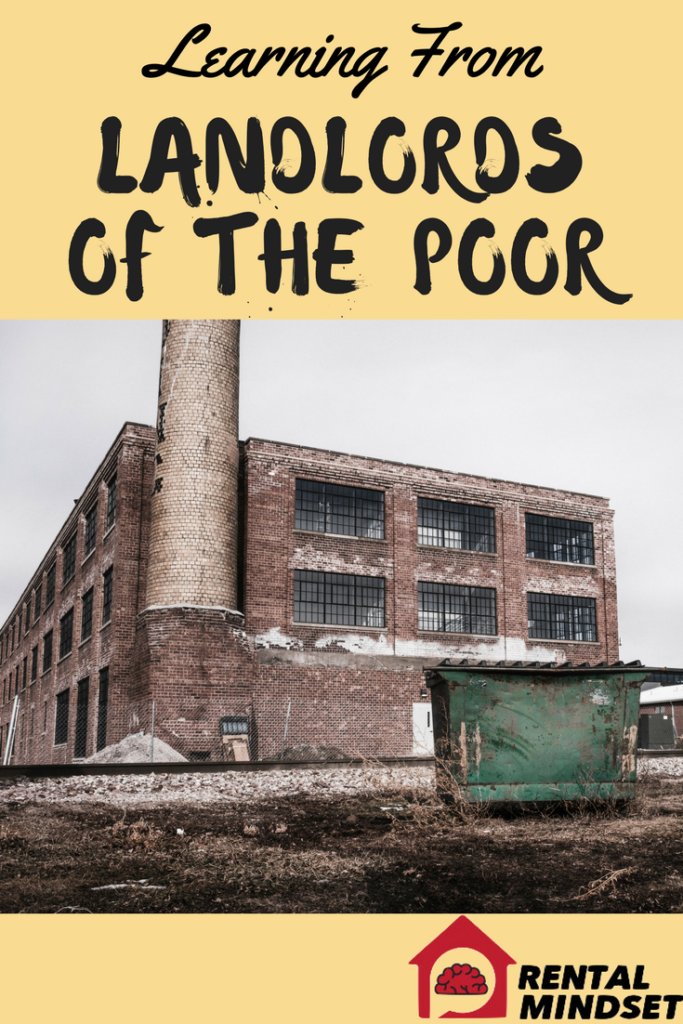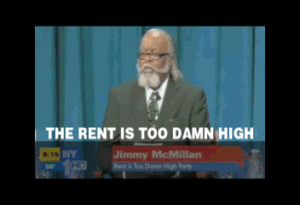Information is dangerous.
Unless you know what to do with it that is.
Just look at Anakin Skywalker. He learned the power of The Force and was a straight A student. But he took that information and drew the wrong conclusion from it. Make a few bad decisions and before you know it, you are Darth Vader.
I guess Star Wars is on my mind…
I’m reading Evicted: Poverty and Profit in the American City which tells the stories of the poorest tenants in Milwaukee. But is also interestingly tells the story of the landlords – who are these people and how does it work being a landlord of the poor?
Let’s make sure we use this information for good.
You Don’t Have to Landlord!
This is the number one thing I want to shout out to people.
Investing in rental properties does not mean you have to be a landlord – separate those in your mind!
So so sooooo many people delay or decide not to invest in rental properties because they don’t want to deal with tenants. YOU DON’T HAVE TO – YOU CAN PAY SOMEONE ELSE TO DO IT FOR YOU! For instance, Abode Manchester letting agents can take up all the tasks required to deal with tenants. From making the tenancy legal to carrying out regular rent reviews, they can help landlords to minimize voids that can cost you money.
If more people understood that, they would take action and benefit from the incredible returns in rental property investing. Presently, there has been a rise in the demand for rental properties. For instance, many people are known to search for houses for rent northern beaches on the Internet to find properties that can be leased. That is why this could be a good time for landlords to benefit from the investments in rental properties.
Moreover, when you learn more about being a landlord, don’t put yourself in the landlord’s shoes and think “I don’t want to do that”.
Use it as information about the role of professional landlords. Appreciate how difficult it is dealing with tenants and how there are big differences between good and bad landlords.
Many Different Price Points Are Possible
The book Evicted is about C class properties. The worst of the worst.
These would be the ones you purchase for $40k move-in-ready and rent for $550 a month. Great ratios, more issues.
The book goes to show that you can make money that way.
Cartman has the correct response to this info: “wha-eva – I’ll do what I want!”
That’s not the only way to get a return. The properties I discuss are quite different: B- minimum, $80k+ that rent for $850+ a month.
The number one way to reduce tenant issues? Buy properties that attract better tenants. The typical tenant in the C class property makes $20-30k a year and relies a lot on government programs. They jump from odd job to odd job and putting food on the table each week is far from a given. (The book even goes into more C- “slum-lording” territory where the only income of $10-15k a year comes from the government.)
The typical tenant in the B- class property makes $40k a year and has a much more steady job. Not incredible career opportunities nor a ton of job security, but certainly employable.
Which one do you want to rent to?
Some Lessons from the Book
Give an inch and they’ll take a mile.
If every day is a struggle, you are willing to cut some people down to feed your kids. That’s the cold hard truth. Rent is by far their biggest expense so often their landlord becomes yet another victim in the struggle.
If a landlord allows a partial payment once, it will happen regularly. If the tenant is planning on moving out, good luck collecting any more rent. They know the only option the landlord has is evicting them, which they are going to move anyways and takes time. Free rent for a while But by far my largest learning from the book is how ineffective communication is between the landlord and tenant. Wow it is bad. Zero hope of phone or any type of digital communication. The landlord has to go in person often to collect rent, pounding on the door until they finally open. No proactive communication about an issue. An incredible number of the issues are minor and could be solved pretty painlessly. But it sure doesn’t happen.
Maybe the tenant is waiting for a broken window to be fixed and doesn’t pay the rent waiting for it to be fixed first. Issues like this can make renting a house difficult. If the tenants find themselves desperate for a window, they might be able to take matters into their own hands by contacting a replacement windows austin company, or one more local to the rented property. However, tenants need to be careful as this could lead to eviction. Ensure the contract is checked before beginning any work on the property. Then the landlord will contact broken window replacement specialists to help deal with the property issue.
Maybe they pay for something or do some work on the property and decide to deduct it from the rent. The landlord doesn’t see it that way and thinks they are paying short.
Communicate, communicate, communicate.
Interesting Read, but Draw the Right Conclusions
You can learn from the landlords of the poor, but make sure you learn the right things.
Don’t turn into Darth Vader…




I think the properties you describe are more fairly represented in the D class. This is populated by people on assistance or are in basic service jobs like working at a retail store such as Walmart.
C class is usually filled with blue collar workers such as mechanics, carpenters, factory workers, etc. Govt assistance is usually under 10% of the tenant base in C class.
Of course it’s hard to define every property in a single category and some c class buildings may be in D class neighborhoods.
I think you are right. I wrote that, then was thinking about going back and changing it. I suppose it is a pretty broad definition that makes it hard to pin down exactly.
When it comes to single family homes, I usually don’t see D ratings. For people truly on welfare only, $10-20k income, they would be in gov housing, apartments, and mobile homes.
So I might call it a C- single family home for someone with a $30k irregular income, working service level jobs but bouncing around. A family of 4 with that income qualifies for food stamps, so at least some assistance, but not straight welfare.
The point you make in general is solid advice, Nitpicking one line doesn’t mean I don’t agree!
It’s not a hard and fast definition and there are definitely different grades to be given. What defines a C vs a C- vs a D+? There are people in A and B-Class apartments on benefits and people in C class that aren’t. Part of it is about crime stats too.
I don’t think it’s common because SFR are almost never built to be rentals so they don’t cater to that demographic, but there are definitely some blighted single-family neighborhoods that I’d consider D-Class such. Huge swaths of Chicago or Detroit come to mind.
I own some property in some C to C- neighborhoods and I did a bunch of renovations and have been attracting C+ and B- type tenants who are just looking to keep the rent reasonable (rents are up 7-10% per year for like 3 years straight). Life has been so much easier since we got better tenants.
Another good point – neighborhood vs building. They don’t necessarily always match up in terms of rating.
Glad to hear you’ve had success keeping the same tenants! That makes such a huge difference in the cashflow, especially if you are successful in raising the rent.
Another lesson through the many examples in the book: don’t do drugs!
I’m gonna have to leave the landlording up to Eric! 🙂
Agree with you though on the general premise. Real estate investing and landlording are not mutually exclusive.
Happy New Year, Brian! Wishing you a lot more CF and equity in 2018.